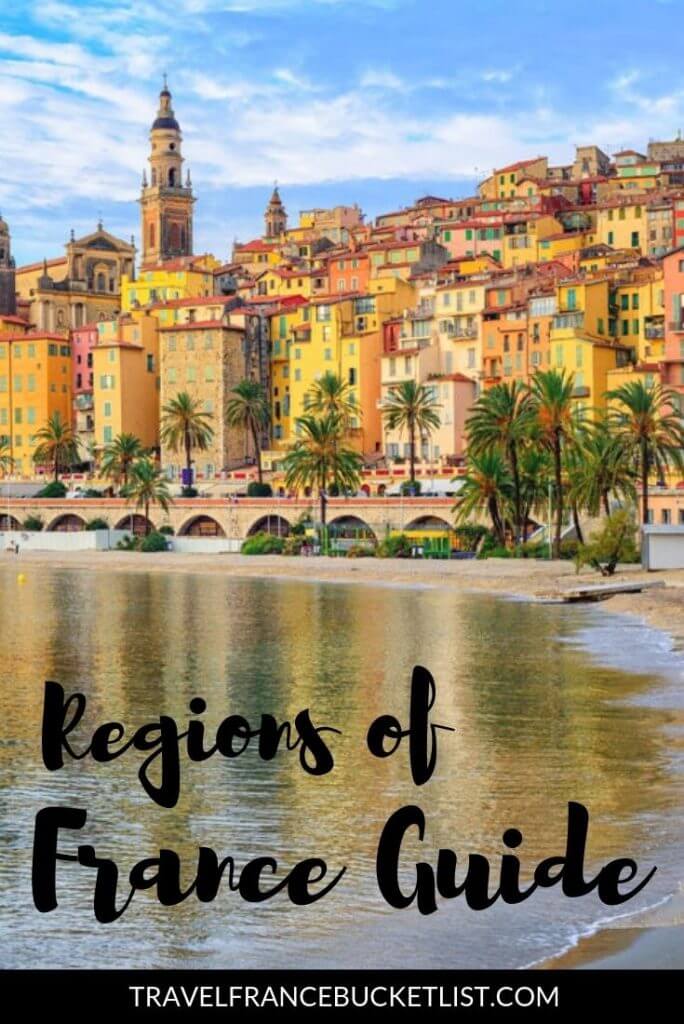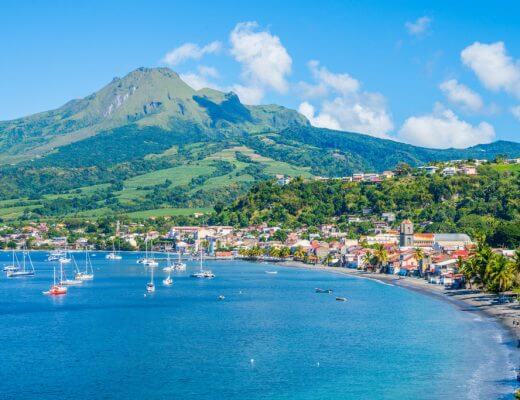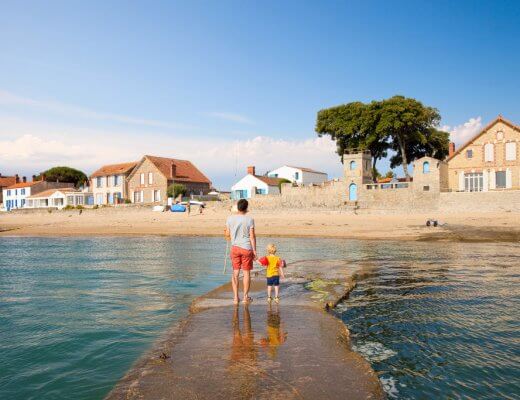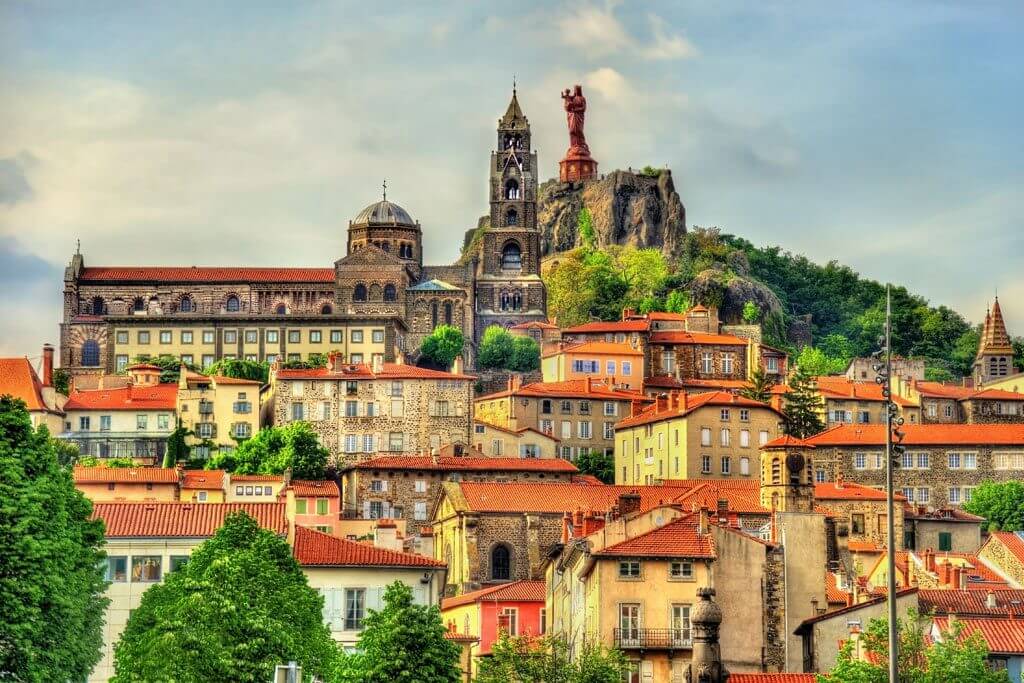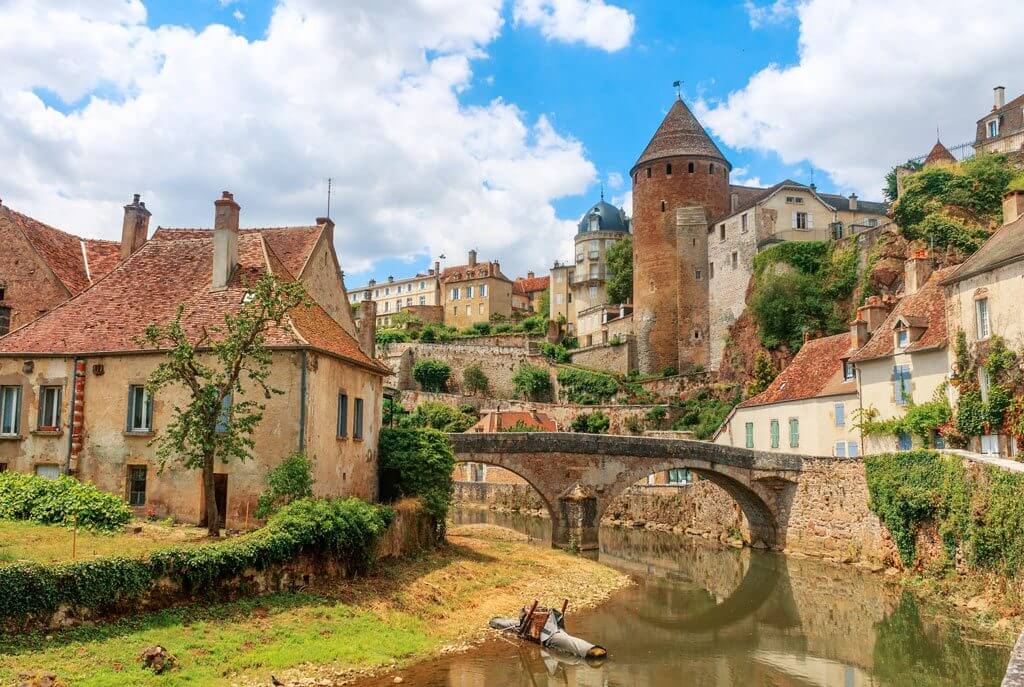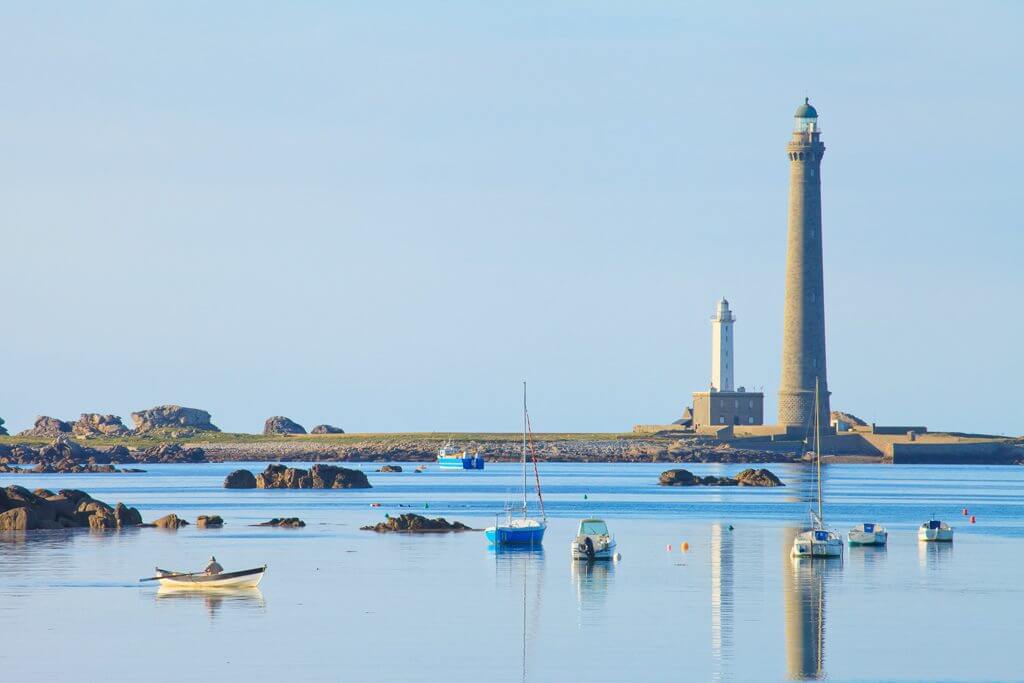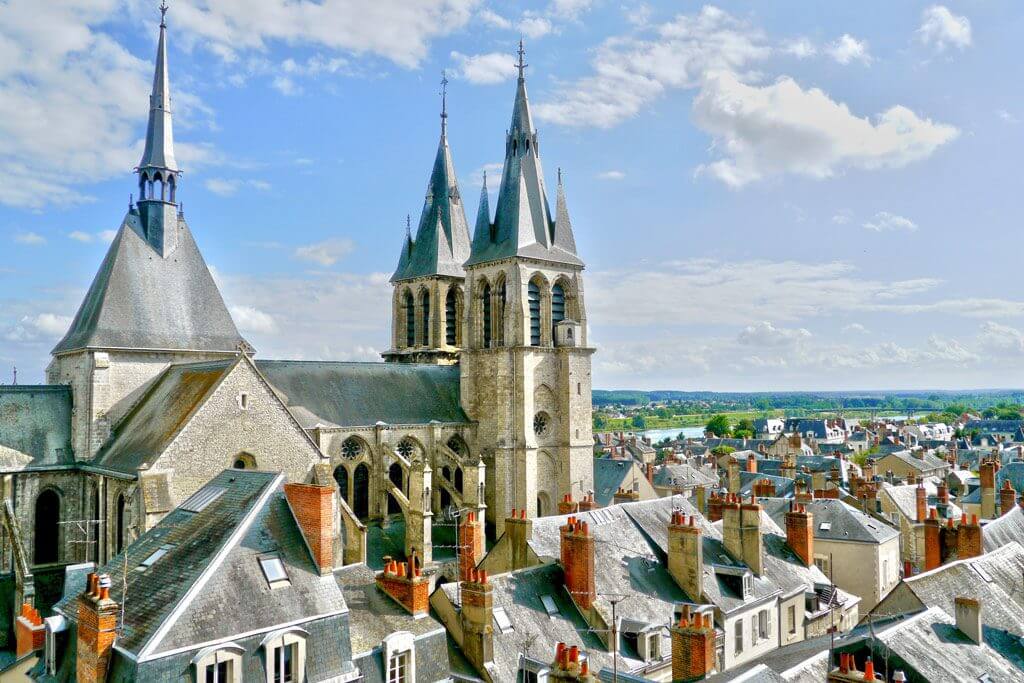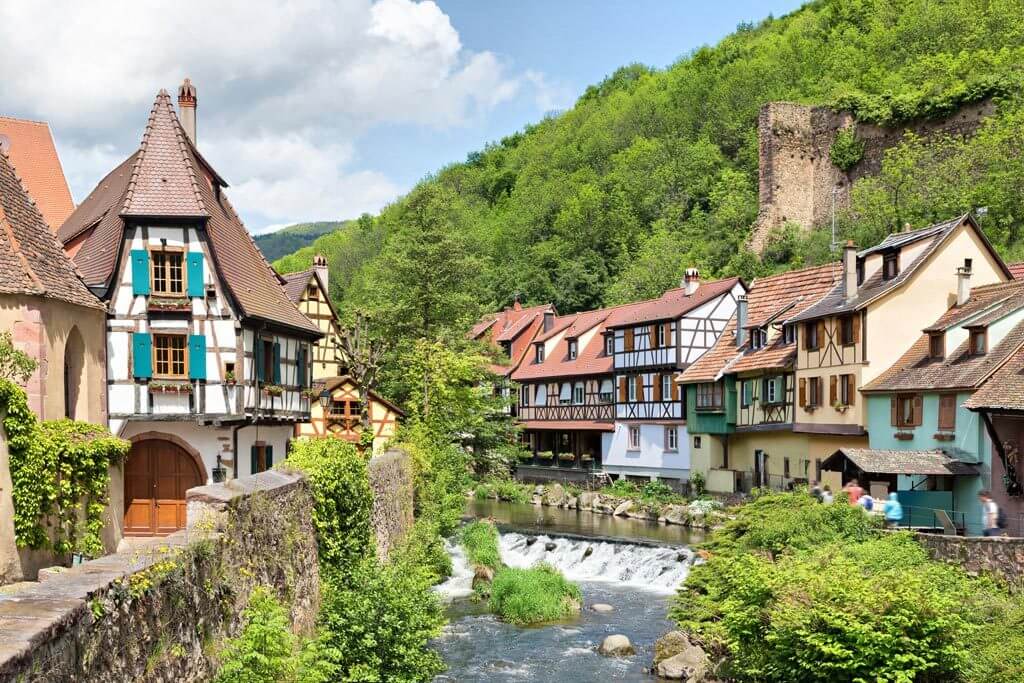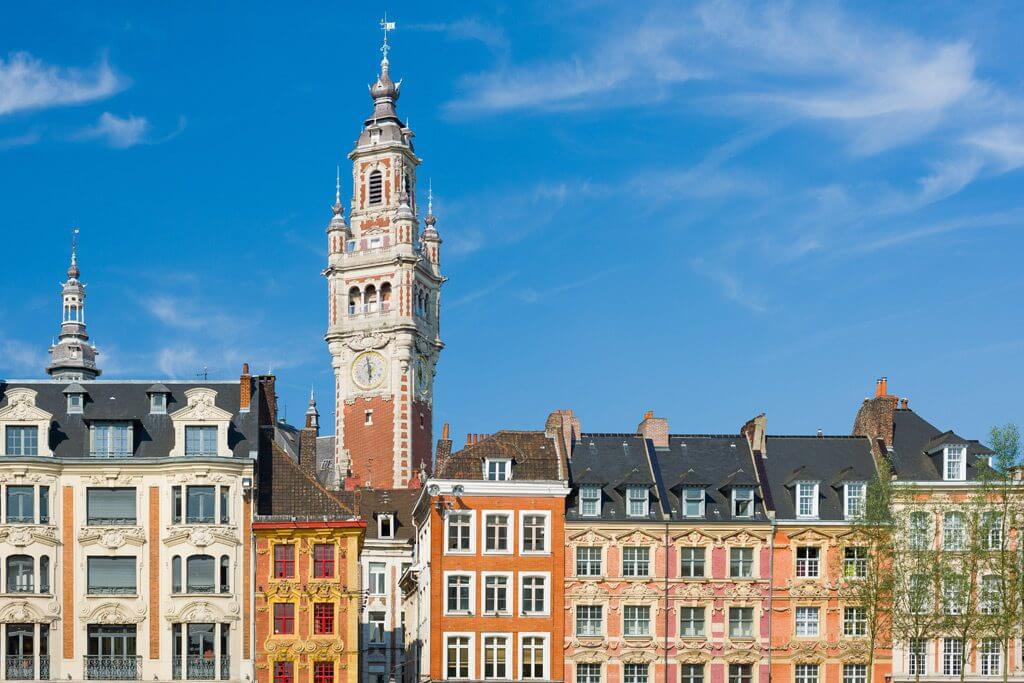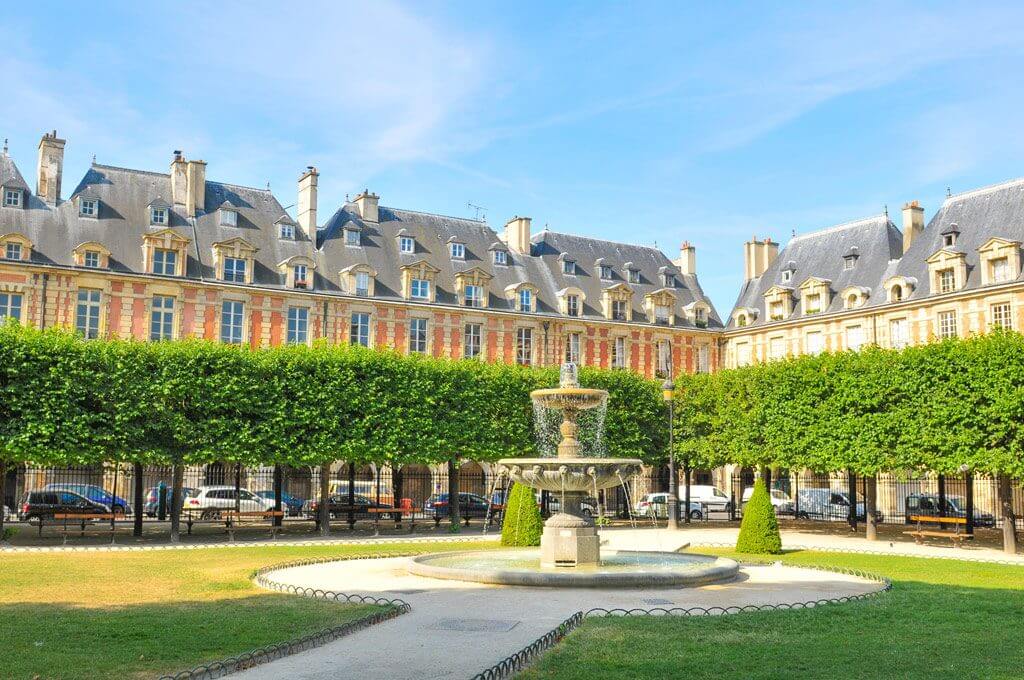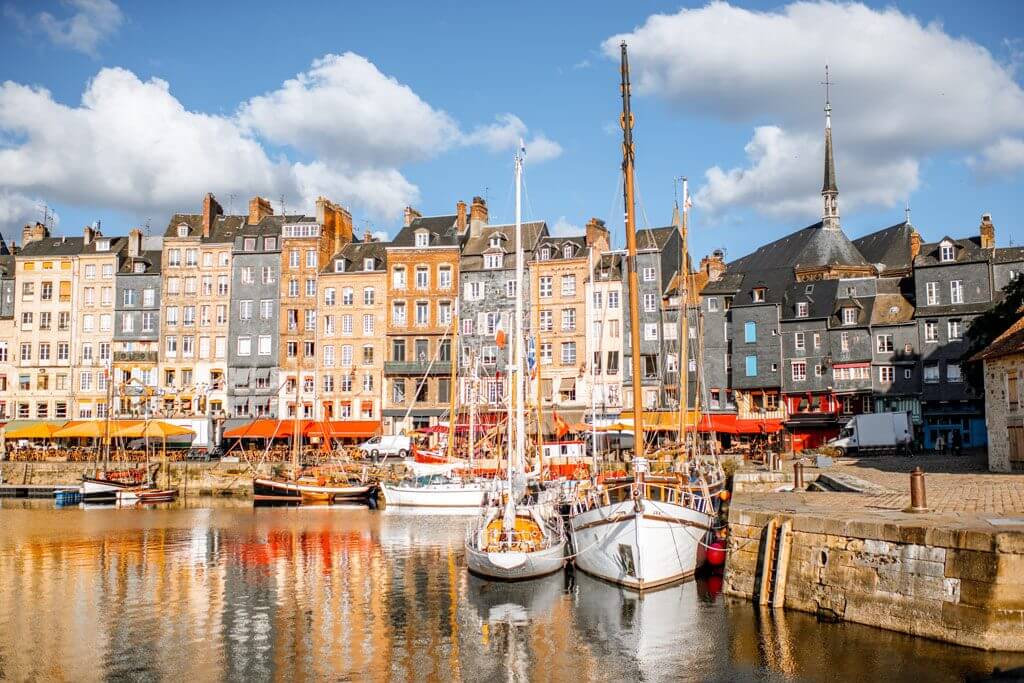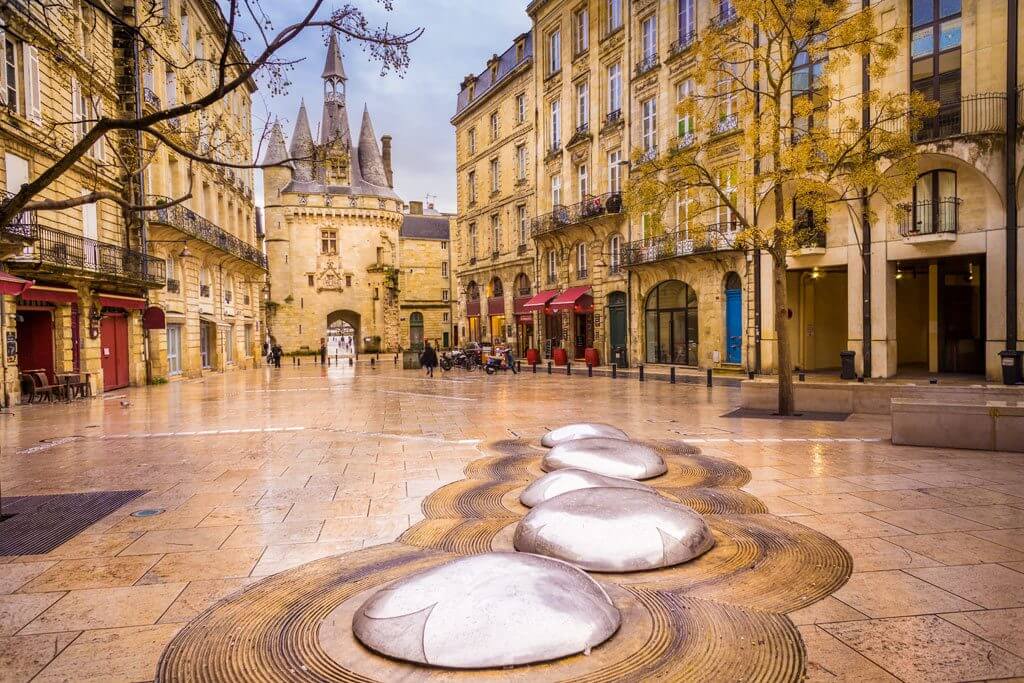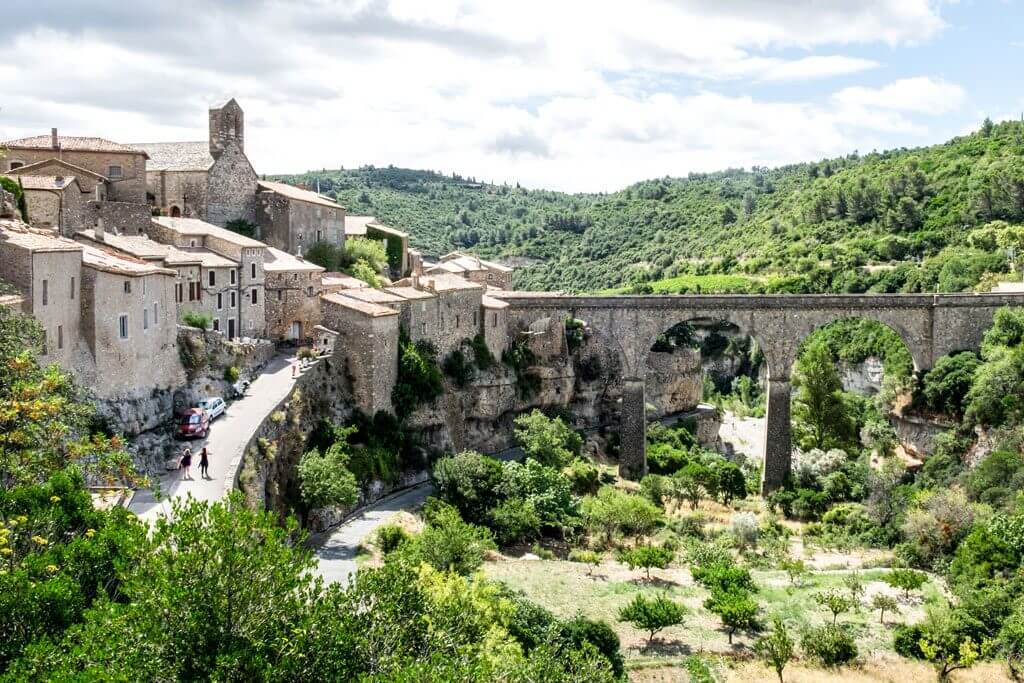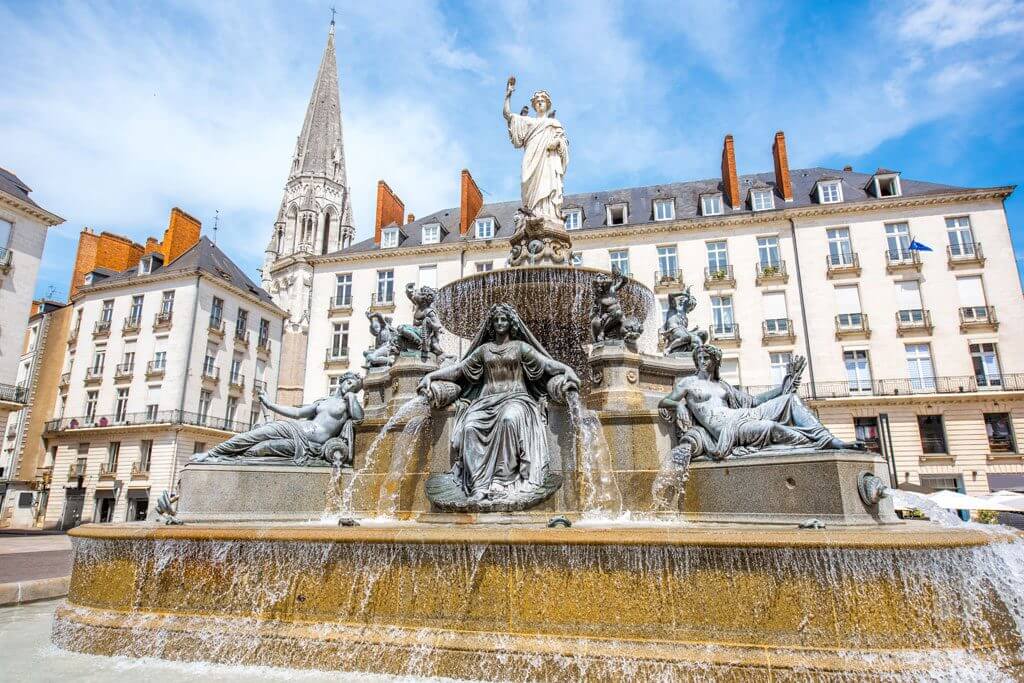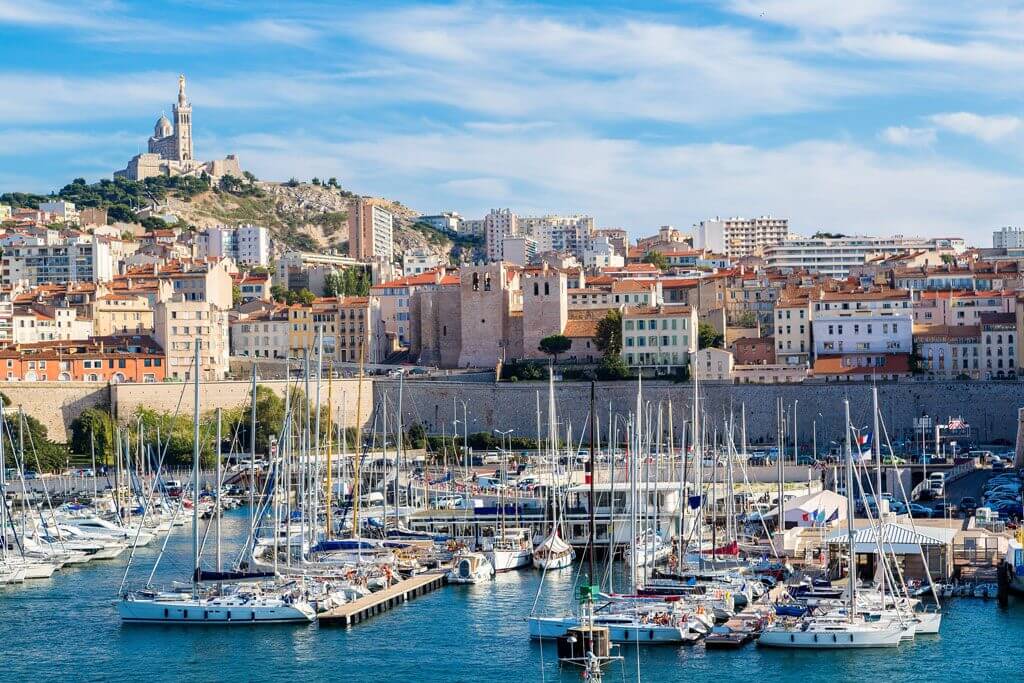Article written by Elisa - Travel Writer & Local in France
This article may contain compensated links. Please read disclaimer for more info.
All About the French Regions
Have you ever heard that France is much more than Paris, its capital? Well, it’s true!
No other country has such a diversity of sights and scenery in such a compact area (547,030 sq. km) like France. From the north’s flat and fertile lands washed by the Atlantic Ocean to the sunny stone-built villages of the Mediterranean coast, France is a colorful country well worth exploring.
Since January 2016, France has been divided into 18 French regions: 13 regions of France are on the European continent, and 5 France regions are overseas. While some French regions like Ile de France remain as they were before the 2016 changes, other regions like Alsace, Champagne, and Bourgogne are today part of new, more extensive French regions such as Grand Est and Bourgogne-Franche-Comté.
Despite the reduction in the number of regions, the regions of France still have their own distinctive character and particularities, which we will showcase in this article.
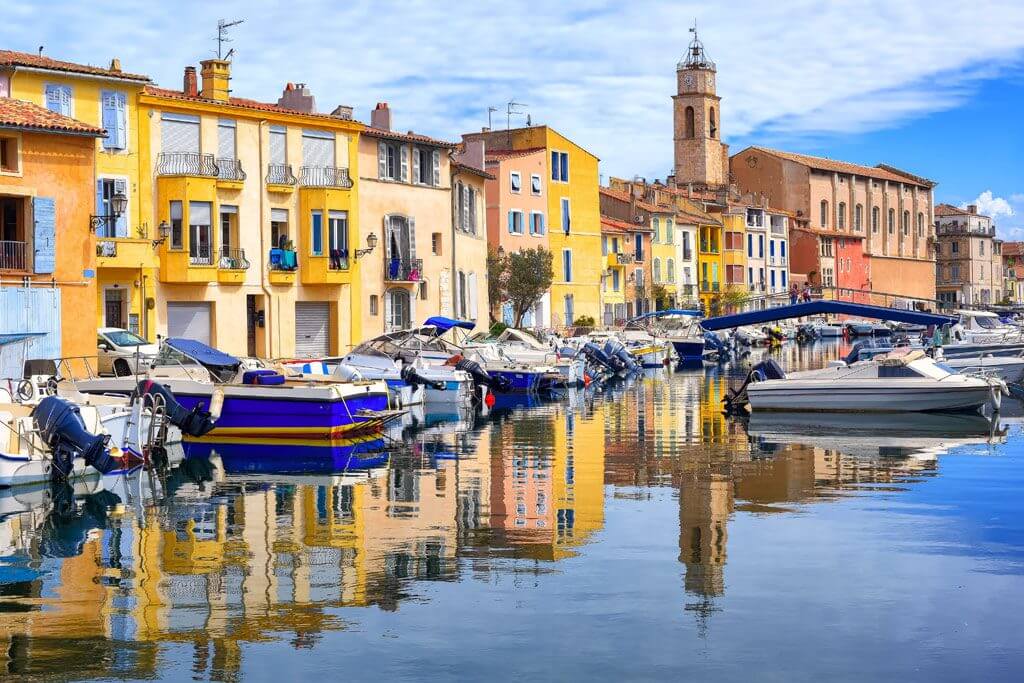
TIP: check out our best tips for planning a trip to France
Regions of France Map
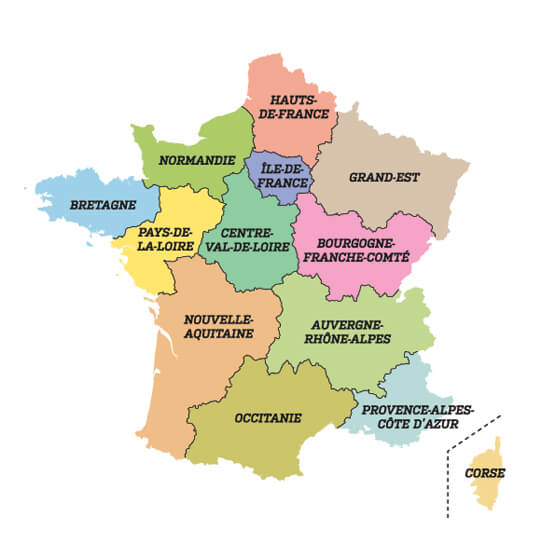
The Map of France above shows the regions on France’s mainland and Corsica Island. This Regions of France Map does not include the regions of France Overseas. These regions are in the Caribbean Sea, the Indian Ocean, and the Pacific Ocean and will be covered in the article about the French Overseas Territories.
The French regions are then divided into departments, which are administrative areas of France. There are 95 departments located in France Mainland, 2 in Corsica, and 5 departments Overseas. Next to the department names, we have included the department numbers (e.g., Ain (01)).
List of French Regions
Northern France: Normandy, Hauts de France, Ile-de-France
Southern France: Provence-Alpes-Côte d’Azur, Occitanie, Ile de Corse
Central France: Centre-Val de Loire
Eastern France: Grand Est, Auvergne-Rhône Alpes, Bourgogne-Franche Comté
Western France: Bretagne, Pays de la Loire, Nouvelle-Aquitaine
French Overseas Territories: Mayotte, Martinique, Guyanne, Guadeloupe, Réunion Island, French Polynesia.
Tourist Map of France

This colorful tourist map of France comes with the names of the main cities in France and some of France’s main attractions (under the form of drawings) by region. On this France tourist map, you can also see the main rivers in France: Seine, Loire, Garonne, Rhône, Charente, and Ill.
What are the best regions to visit in France?
There are no best regions to visit in France, but some French Regions are more popular than others. The top tourist regions of France are Ile-de-France ( the region of Paris), Provence-Alpes-Côte d’Azur (the region of Provence and the French Riviera), Normandie, Centre-Val de Loire (the region of the Loire Valley Castles), and Grand-Est (the region of Alsace and Champagne).
Getting Around France
Getting around France is very easy, both by public and private transportation. The two most popular ways to explore France on public transport are by train and by car on a road trip.
France By Train
The main cities in France and the top Metropolitan France attractions are well connected by train thanks to TGV trains (fast trains).
From Paris, some great weekend getaways are possible with train journeys of just 4 hours or less – Click here to book your train tickets
France By Car
A self-drive vacation is also a good option in France, especially if you want to go beyond the main sights. The country has a good number of well-maintained highways, but we recommend driving the secondary roads too: most of the best French road trips go through secondary, scenic routes.
Whether you’re looking to hug the coast or drive through some of the world’s best vineyards or lavender fields, find your adventure with our France road trip planner e-books. All you need to supply is a car and a killer playlist.
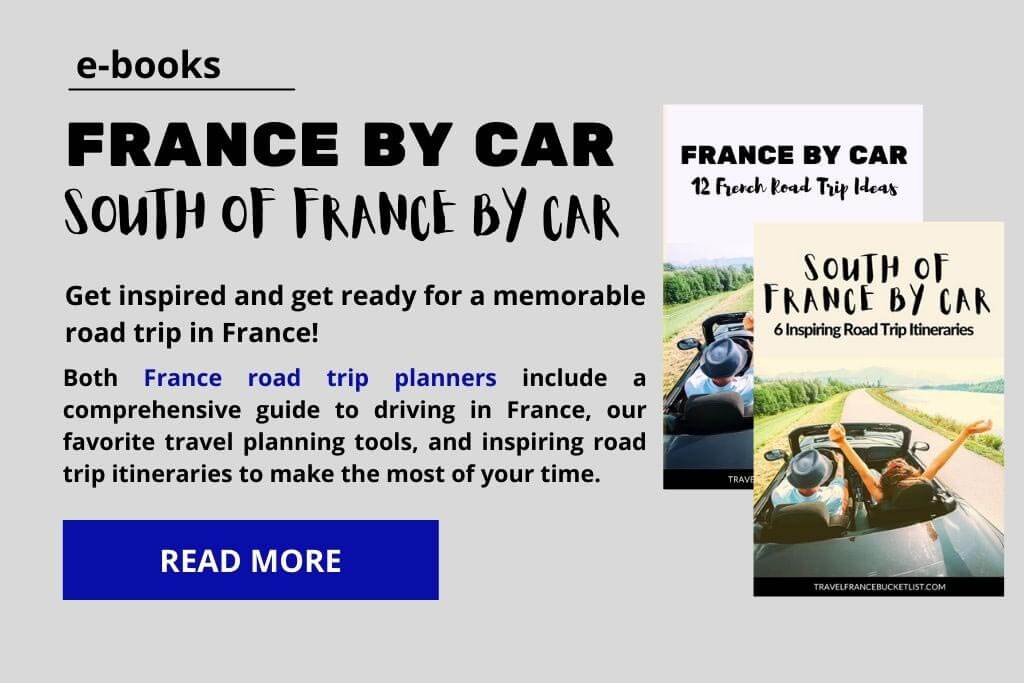
TIP: DiscoverCars.com compares 900 companies at over 53,000 locations to guarantee you the best price. Check out our best tips for hiring a car in France.
Regions in France (+ Metropolitan France Attractions)
The regions in France are incredibly varied, and they have much to offer: culture and heritage, traditions and gastronomic terroirs, sea or mountain, city or countryside. So pack your bags and let’s explore France’s regions and main attractions.
Latest Posts
It’s impossible not to love the Auvergne-Rhône-Alpes region in Eastern France. Auvergne-Rhône-Alpes is one of the most varied regions in France, offering a wide range of different destinations to satisfy every traveler. This new region of France includes the pre-2016 regions of Auvergne and Rhône Alpes. The capital city of the Auvergne-Rhône-Alpes region is Lyon.
Auvergne is the land of volcanoes and hot spas but also the land of Romanesque churches and good cheese.
Rhône-Alpes is home to picturesque stone-built villages frozen in time. It is also the region of two of France’s most beautiful cities, Annecy and Lyon, and the snowy peaks of the French Alps.
Protected natural reserves, almost a hundred volcanoes, walking trails, Romanesque churches, and more than 20,000 kilometers of waterways, all this and more is waiting for you in this blessed land. What are you waiting for to explore this corner of France?
Auvergne-Rhône-Alpes is divided into thirteen departments: Ain (01), Allier (03), Ardèche (07), Cantal (15), Drôme (26), Isère (38), Loire (42), Haute-Loire (43), Puy-de-Dôme (63), Rhône (69D), Métropole de Lyon (69M), Savoie (73), Haute-Savoie (74). The main cities in the region are Lyon, Grenoble, Saint-Etienne, Chambéry, Valence, Annecy, and Clermont-Ferrand.
Auvergne-Rhône-Alpes Top Tourist Attractions: Lyon, the Volcanoes of Auvergne, famous ski resorts in the French Alps (Chamonix, Courchevel, Mérivel, Val d’Isère . .), Annecy and its lake, the spa town of Vichy, Clermont Ferrand, and Puy-en-Velay (a major pilgrimage site).
Bourgogne-Franche-Comté in Eastern France is the land of world-famous wines, picturesque small towns, and snails. This new French region comprises the former regions of Bourgogne (Burgundy) and Franche-Comté. The capital city of the Bourgogne-Franche Comté region is Dijon.
The former region of Bourgogne is famous for its Romanesque heritage, some of the best vineyards of France, good gastronomy, beautiful Rennaissance and Medieval castles, and river tourism. Actually, Bourgogne has the largest network of inland waterways in France!
Franche-Comté, conversely, is well known for its diverse landscapes and large open spaces thanks to the wealth of the Vosges Massif, the Jura Mountains, and its many lakes and forests.
Bourgogne-Franche-Comté is definitely an excellent combination of heritage + gastronomy, and nature at its best.
The region of Bourgogne-Franche-Comté is divided into eight departments: Côte-d’Or (21), Doubs (25), Jura (39), Nièvre (58), Haute-Saône (70), Saône-et-Loire (71), Yonne (89), Territoire de Belfort (90). The main cities in the region are Dijon, Besançon, Montbéliard, and Belfort.
Bourgogne-Franche-Comté Top Tourist Attractions: Natural Park of Ballons des Vosges, the Jura, the picturesque Burgundy villages, the Royal Salt Works at Arc-et-Senans, Route des Grands Crus and other Burgundy wine routes, Cluny Abbey, Vézelay, Dijon, and Beaune.
We must admit that we have a crush on Bretagne; this French region is so varied and beautiful!
The westernmost region of France is a region of tradition, character, Celtic roots, and legends. It is a land of wild and unique landscapes, from rocky coastlines and cliffs to moorland and medieval towns. The capital city of the Bretagne region is Rennes.
But of course, there is much more! Brittany is also a land of sailors, isolated lighthouses, oysters, fantastic coastal walks, and mysterious prehistoric alignments. Brittany is magical, culture, crêpes & cider, traditional festivals, and, most of all, true nature.
Brittany is divided into four departments: Côtes-d’Armor (22), Finistère (29), Ille-et-Vilaine (35), and Morbihan (56). The main cities in the region are Rennes, Brest, and Quimper.
Bretagne Top Tourist Attractions: Rennes, Saint Maló, the Islands, GR34 (coastal multi-day hike), Carnac Alignments, Gulf of Morbihan, Emerald Coast, and the Pink Granite Coast.
The region of Centre-Val de Loire, in Central France, gets its name from the Loire River, the longest river in France. Irrigated by the Loire and its many tributaries, this beautiful French region produces excellent wines perfectly complemented with savorous regional food. The capital city of the Centre-Val de Loire region is Orléans.
Beloved by Kings, Queens, and artists, the Loire Valley is also the cradle of the Renaissance in France and is world-famous thanks to its amazing Châteaux de la Loire and the remarkable gardens that line the river. The Loire Valley Castles are today one of the most popular tourist attractions in France.
Centre-Val de Loire is also one of the regions of France that attracts large numbers of bike tourists: it sees more than 1 million bikers per year! Indeed, La Loire à Vélo (the Loire by bike) is perhaps the best way to explore this beautiful region.
The region of Centre-Val-de-Loire is divided into six departments: Cher (18), Eure-et-Loir (28), Indre (36), Indre-et-Loire (37), Loir-et-Cher (41), and Loiret (45). The main cities in the region are Tours, Orléans, and Bourges.
Centre-Val-de-Loire Top Tourist Attractions: Loire Valley Castles, the Loire by bike, Chartres and Bourges Cathedrals, Loire Valley vineyards, the historical cities and towns of Tours, Blois, Chinon, and Anjou.
Corse (Corsica Island)
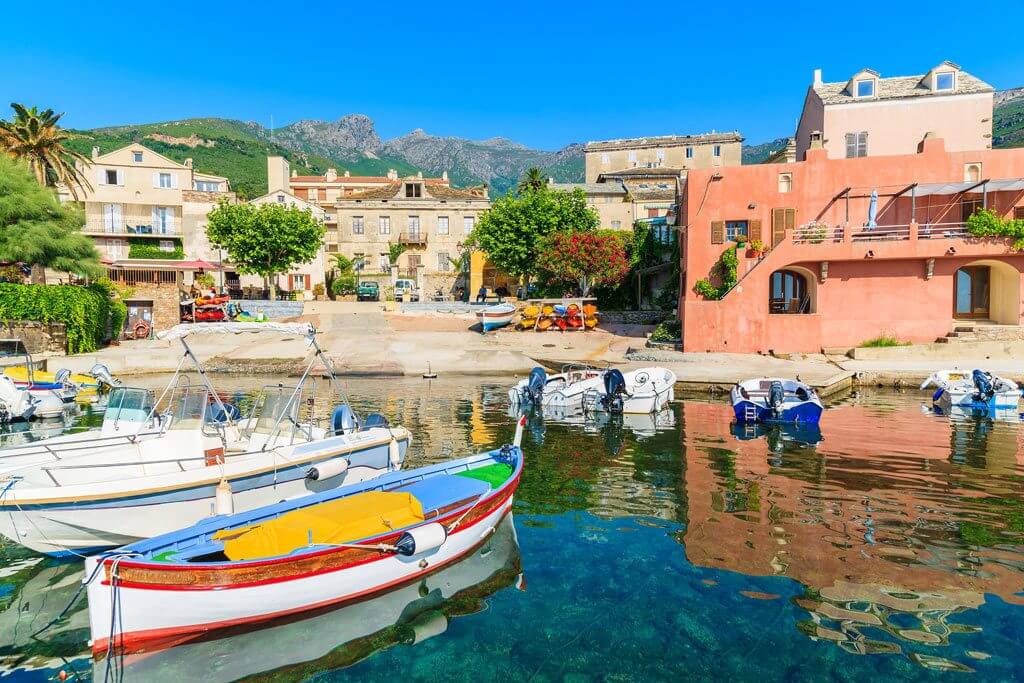
The island region of Corse (Corsica) is located on the Mediterranean Sea in Southern France. Corsica’s capital is the city of Ajaccio.
Lying 200 kilometers from the French Riviera, the homeland of Napoleon Bonaparte is one of the most beautiful French Islands, a mini-continent with hilltop villages and hiking trails, beaches, and idyllic turquoise waters.
Corsica is far away, but don’t hesitate to discover the extraordinary landscapes of this beautiful island! Corsica is best explored by car, and renting a car in Europe is very easy.
Corsica is divided into two departments: Corse-du-Sud (2A) and Haute-Corse (2B).
Corsica Top Tourist Attractions: Calanques de Piana, Calvi Citadel, its beaches, Porto Vecchio, Bonifacio, water sports.
In Eastern France, Grand Est incorporates the former French regions of Alsace, Champagne-Ardennes, and Lorraine. The capital city of the Grand Est region is Strasbourg.
Alsace is a land between the Germanic and Latin worlds, a mosaic of hills, mountains, and plains dotted with castles, vineyards, and picturesque villages. The Alsace Christmas Markets are some of the best Christmas Markets in France!
Champagne, on the other hand, is best known for its bubbles and historical cities like Reims and Troyes. Last but not least, Lorraine is world-known for its quiche, madeleines, and mirabelle plum.
Bordering Belgium, Germany, Luxembourg, and Switzerland, Grand Est is a place with many tourist attractions. It is also a land of memory, and it was the theater of some of the most important battles of WWI. In Grand Est, you are never far from the forest: the Vosges and the Regional Parks of Ardennes and Lorraine.
Grand Est is divided into ten departments: Ardennes (08), Aube (10), Marne (51), Haute-Marne (52), Meurthe-et-Moselle (54), Meuse (55), Moselle (57), Bas-Rhin (67), Haut-Rhin (68), and Vosges (88). The main cities in Grand Est are Strasbourg, Metz, Nancy, Reims, Mulhouse, and Colmar.
Grand Est Top Tourist Attractions: Alsace Wine Route, the villages of Alsace, Alsace’s Christmas Markets, Champagne’s vineyards, Reims Cathedral, Verdun and other WWI historical sites, Strasbourg, Colmar, Troyes, Nancy, the Vosges, and the Ardennes.
Hauts-de-France, in Northern France, is one of the lesser-known regions of France. And it is a pity because it is located just a stone’s throw from Paris. Stretching from just outside the northern suburbs of Paris right up to the coastline of the English Channel, the former Nord Pas-de-Calais and Picardie regions officially became the northernmost region of France with the regional changes in 2016. The capital city of the Hauts-de-France region is Lille.
The Hauts-de-France region is full of beautiful cathedrals, belfries, and citadels, and its plains bear witness to its mining history. It is also the region of the Channel beach resorts and relaxing seaside getaways on the Opal Coast.
Don’t miss beautiful Lille, with its Lille Stock Exchange, and Notre Dame d’Amiens Cathedral, one of the Grandes Cathédrales featuring the highest nave in France.
Hauts-de-France is divided into five departments: Aisne (02), Nord (59), Oise (60), Pas-de-Calais (62), and Somme (80). The main cities in Hauts-de-France are Lille, Amiens, Roubaix, and the port cities of Dunkerque (Dunkirk) and Calais.
Hauts-de-France Top Tourist Attractions: Amiens Cathedral, Domaine de Chantilly, Dunkirk, the seaside resort of Le Touquet, Lille, the Somme Bay & WW1 battlefields.
Unlike its neighbor, the Hauts-de-France, Ile-de-France is one of the most visited regions in France, mainly thanks to Paris, France’s capital city. Its name means “Island of France” because, in Medieval times, the French Kingdom was not much bigger than Ile-de-France.
After visiting the top sites in Paris, venture beyond the Boulevard Périphérique to explore what Ile de France has to offer. Some attractions like the Palace of Versailles or Disneyland Paris are known to all, but there are many more interesting things to see and do in Ile-de-France.
Visitors can enjoy nature and relaxation in one of the four regional natural parks while history buffs can learn about the Kings and Queens of France in amazing historical sites such as Château de Fontainebleau and Saint-Denis Basilica-Cathedral.
Picturesque villages are never far from the capital, and places like Auvers-Sur-Oise and Bougival were immortalized by Van Gogh, Renoir, and the Impressionists.
Ile-de-France is divided into eight departments: Paris (75), Seine-et-Marne (77), Yvelines (78), Essonne (91), Hauts-de-Seine (92), Seine-Saint-Denis (93), Val-de-Marne (94), Val-d’Oise (95). The main cities in Ile-de-France are Paris, Boulogne-Billancourt, Saint-Denis, and Versailles.
Ile-de-France Top Tourist Attractions: Paris, Versailles, Château de Fontainebleau, Disneyland Paris, Château de Vincennes, Provins medieval city, and Saint-Denis Basilica Cathedral.
Normandy, in Northern France, is one of the most popular French regions on the tourist map of France. And for a reason! Normandy offers the visitor a stunning coastline, picturesque villages, and idyllic countryside. Normandy is also famous for its rich history, tower bells, cows, and cheese. The capital city of Normandy is Caen.
Normandy is a popular weekend getaway from Paris, and many hotels and restaurants thrive along the Normandy coast, especially around the towns of Deauville and Honfleur.
Normandy is also a land of medieval towns, fabulous castles, and artists. The Impressionist movement was born in Normandy, inspired by Monet’s “Impression” of the sunrise at Le Havre.
Normandy is divided into five departments: Calvados (14), Eure (27), Manche (50), Orne (61), and Seine-Maritime (76). Normandy’s main cities are Le Havre, Caen, and Rouen.
Normandy Top Tourist Attractions: Mont Saint-Michel, the Bayeux Tapestry, D-Day Landing Sites, Honfleur harbor, Rouen and its Cathedral, chic Deauville, picturesque villages, the Seine Valley and Monet’s Gardens in Giverny.
It’s almost impossible to get bored in Nouvelle-Aquitaine. Located in Western France, this is the French region of mountains and forests, prehistoric caves, beaches, medieval villages, and some of the most beautiful castles in France. The capital city of Nouvelle-Aquitaine is Bordeaux.
Its 720 kilometers of coast are a paradise for surfers, while people looking for a quiet vacation can enjoy no less than 30 spa towns, including Dax, France’s top spa town.
Nouvelle-Aquitaine is also a delight for foodies, with excellent wines and brandies and around twenty Michelin-starred restaurants.
Sun, history, dynamism, and gastronomy . . . there’s a great French vacation for everyone in Nouvelle Aquitaine!
Nouvelle-Aquitaine is divided into twelve departments: Charente (16), Charente-Maritime (17), Corrèze (19), Creuse (23), Dordogne (24), Gironde (33), Landes (40), Lot-et-Garonne (47), Pyrénées-Atlantiques (64), Deux-Sèvres (79), Vienne (86), and Haute-Vienne (87). The main cities in the region are Bordeaux, Limoges, and Poitiers.
Nouvelle Aquitaine Top Tourist Attractions: Bordeaux, the Cité du Vin, the Arcachons Bassin, Saint Emilion, the Landes Forest, the Atlantic Pyrénées, Lascaux Caves, Dordogne region, the Basque Country, La Rochelle, and Atlantic isalands.
Traveling to Occitanie is like returning to the basics: the land, the sea, and the sky. Lesser-known than its chic neighbor, Occitanie in Southern France, is a fantastic region to explore, nestled between the Pyrénées and the Mediterranean Sea. The capital city of the Occitanie region is Toulouse.
Less frenetic than Provence and the French Riviera but definitely more affordable, Occitanie is a land of sunny stone-built villages, vertiginous citadels, great mountain hikes, and fascinating history. A land where its inhabitants like to take their time and enjoy the small pleasures of this life.
Occitanie does not lack lively cities like Roussillon, Toulouse, and Montpellier. History buffs will want to head to Rocamadour, Albi, and Carcassonne, the gate to the fascinating Cathar Country.
Occitanie is divided into thirteen departments: Ariège (09), Aude (11), Aveyron (12), Gard (30), Haute-Garonne (31), Gers (32), Hérault (34), Lot (46), Lozère (48), Hautes-Pyrénées (65), Pyrénées-Orientales (66), Tarn (81), Tarn-et-Garonne (82). The main cities in Occitanie are Toulouse, Montpellier, Nîmes, Perpignan, and Béziers.
Occitanie Top Tourist Attractions: Carcassonne and the Cathar Country, Albi, Toulouse, the Pyrénées, the Camargue, Rocamadour, Nîmes, Pont du Gard, the Valleys of the Cévennes, and Canal de Midi.
Located in Western France, Pays de la Loire is a region of châteaux and vineyards, with Nantes as its capital.
Pays de la Loire is lesser known than the neighboring region Centre-Val de Loire, and perhaps it lacks top tourist attractions, but this does not mean that it is not an interesting region to be explored. Crossed from east to west by the Loire River and bordered by the Atlantic Ocean, Pays de La Loire showcases a stunning coastline, charming towns and villages, varied natural landscapes, and cultural cities.
Nantes, the Dukes of Brittany’s historic capital, is packed with interesting things to see and do, followed by the historic cities of Angers and Le Mans. The latter is best known for its legendary racetrack and prestigious 24-hour race.
History buffs will love to visit Fontevraud Abbey, the final resting place for a line of monarchs, starting with Eleanor of Aquitaine, Henry II, and Richard the Lionheart. Children will have a blast at Puy du Fou, one of the country’s most-visited theme parks, with medieval and fantasy-style shows.
Pays de la Loire is divided into five departments: Loire-Atlantique (44), Maine-et-Loire (49), Mayenne (53), Sarthe (72), and Vendée (85). The main cities in the region are Nantes, Angers, Le Mans, and Saint-Nazaire.
Pays de La Loire Top Tourist Attractions: the Atlantic Coast’s delightful landscapes, vineyards, 24 hours of Le Mans, Angers, Les Machines de l’Ile in Nantes, Puy du Fou, Fontevraud Abbey.
The region of Provence-Alpes-Côte d’Azur, in Southern France, has everything to make visitors happy: the French Riviera’s sunny beaches and chic resorts, the endless lavender fields and stone villages of Provence, picturesque marinas, secluded creeks with turquoise waters, great hikes and skiing in the wintertime, and excellent gastronomy. The capital city of Provence-Alpes-Côte d’Azur is Marseille.
Bordering Monaco and Italy, cities like Nice and Cannes in Côte d’Azur are often the departure point of a French Riviera road trip or a stop on longer trips to Italy.
Provence-Alpes-Côte d’Azur (PACA between friends) is one of the most visited regions of France. It gets hot and crowded in the summer, but it is an excellent travel destination in spring or fall when the crowds are gone and the temperatures are mild.
Provence-Alpes-Côte d’Azur is divided into six departments: Alpes-de-Haute-Provence (04), Hautes-Alpes (05), Alpes-Maritimes (06), Bouches-du-Rhône (13), Var (83), Vaucluse (84). The main cities in Provence-Alpes-Côte d’Azur are Marseille, Nice, Toulon, Avignon, and Aix-en-Provence.
Provence-Alpes-Côte d’Azur Top Tourist Attractions: Marseille, the Alps Maritimes, French Riviera (St Tropez, Nice, Cannes, Antibes), villages of Provence, Aix-en-Provence, Avignon, Arles, and the Calanques de Marseille-Cassis.
So there you have it, a quick guide to the regions of France and the best (Metropolitan) France attractions. What are your favorite France regions?
Read more about the French Regions
Pin it now & read it later
